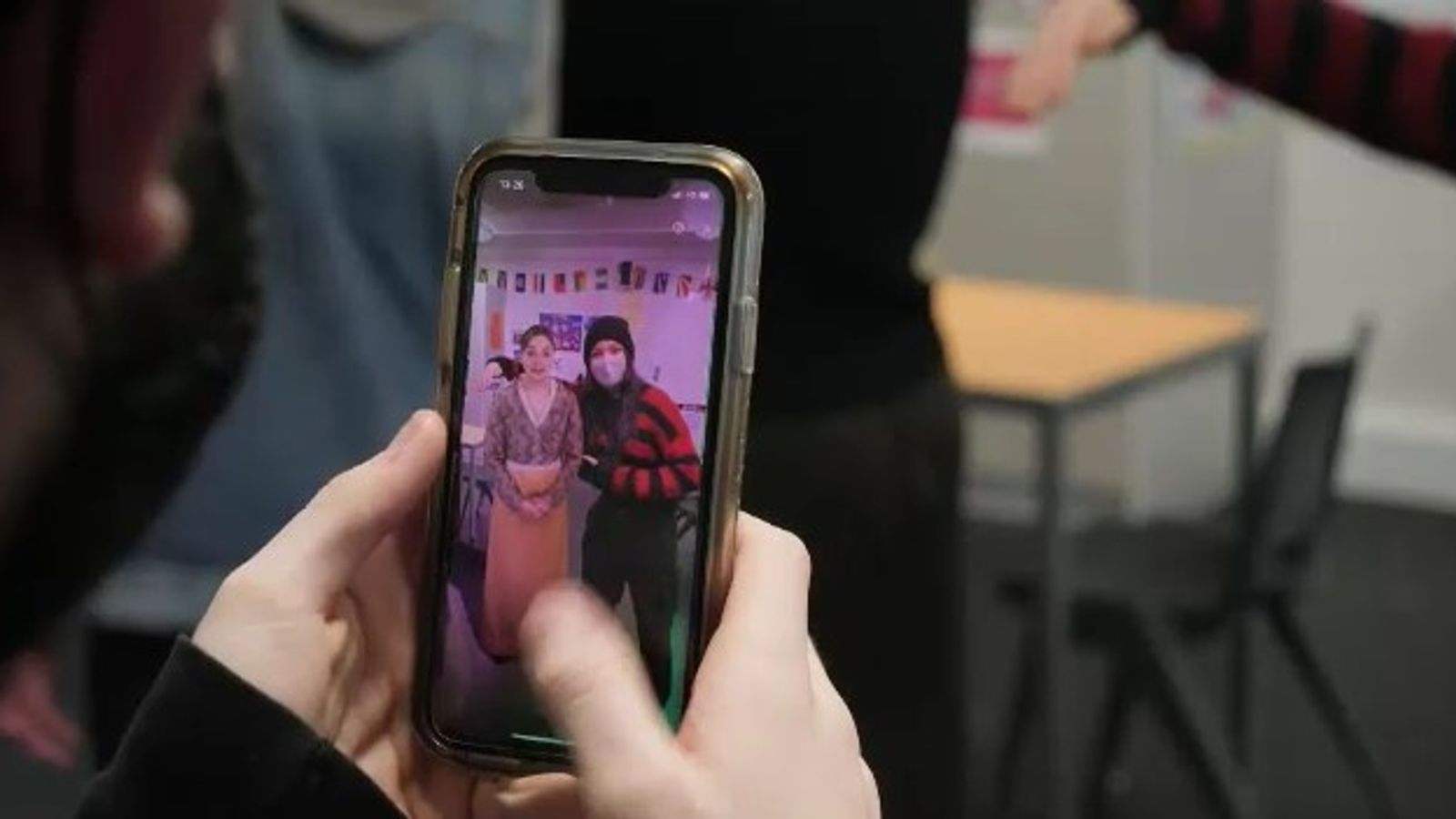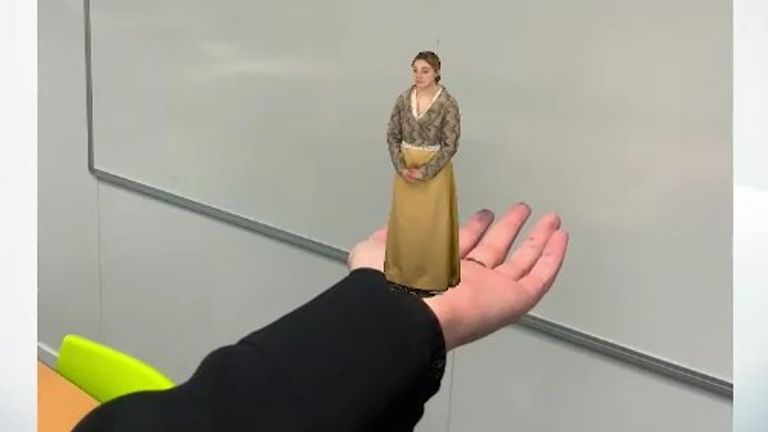3D holograms of long-dead scientists are being used to inspire a new generation of Irish women to pursue a career in the male-dominated fields of science and technology.
The Inspiring Women project, which is still in a trial period, uses actors to present the stories of pioneering Irish women scientists to schoolchildren in an interactive Augmented Reality (AR) setting.
Using a process called volumetric capture, the actors appear as three-dimensional holograms which – it’s hoped – will be more engaging and inspirational for a teenage audience than traditional teaching materials.
Sky News was present when the technology was first shown to a class of children.
Pupils at Stepaside ETSS (Educate Together Secondary School) in Dublin gathered around iPhones and iPads to watch as actors portraying Ellen Hutchins, Ireland’s first female botanist, and physician Dorothy Stopford Price told their stories.
Viewed on the mobile devices, the actors appeared as if physically present in the classroom, and the pupils posed for pictures and videos alongside them. The interactivity seemed to greatly appeal to the class.
“I think it’s amazing,” said 15-year-old Luanne van der Walt. “I think with the technology, it’s brilliant. It looks so real, it’s interesting and it captures your attention immediately.
“You want to know how far you can play with it, what else it can do. It’s attention-grabbing, it’s creative, and it’s really impressive to see the technology, how it’s actually done.”
Thirteen-year-old Noa Nerin, who has an interest in biology, said that “lots of women aren’t really into science, so seeing women actually achieving that really helps, because you think if they can do it, you can do it too”.
The two featured women were important historical figures in Irish science. In her ground-breaking botany career, Ellen Hutchins (1785-1815) identified hundreds of species, while Dorothy Stopford Price (1890-1954), described by The Lancet as “formidable”, was instrumental in the elimination of childhood tuberculosis in Ireland by introducing the BCG vaccine.
“At the time they were alive and they achieved those things, it was much harder,” said Noa. “So knowing that also helps. Seeing them is really cool, it’s like woah, people can actually achieve bringing people back from the past in that way.”
The technology used in the project is from an Irish start-up tech company called Volograms. Based in Dublin, it claims to have the first app in the world that enables users to produce the volumetric holograms of themselves using just a smartphone.
Usually the process is an expensive and time-consuming one, carried out at a professional green screen studio, with dozens of cameras. But the Volograms app, called Volu, allows a user to carry out volumetric capture using a standard smartphone camera. Although the person is captured from just one angle, the app uses artificial intelligence (AI) to add texture and 3D shape.
The resulting vologram can be dropped into videos, or superimposed on any backdrop, while users can experiment with size and filters.
Vologram’s chief commercial officer Nicolas Moreno de Palma told Sky News that “these are 3D representations of real humans that are captured in the same way we currently capture video or pictures”.
“So you record something on camera, and then you process it into a 3D object, that can live in any 3D world like video games, augmented reality, virtual reality, what people are calling these days the metaverse.”
The Inspiring Women project is funded by research and innovation centre Learnovate. Its director Nessa McEniff said that the “project breaks down boundaries of space and time by fusing history, drama and computer science”.
“Future graduates need a similar fluency between disciplines connecting arts, humanities and social sciences subjects with science, technology, engineering and maths.”
The gender imbalance in STEM (science, technology, engineering and mathematics) is well-documented internationally. In Ireland, which bills itself as one of the world’s leading technology hubs, only 25% of the 120,000 people working in STEM fields is female, according to the Central Statistics Office. Women are seriously under-represented at senior or management level in these areas.
It’s hoped initiatives like Inspiring Women may go some way to addressing the apparent reluctance of young women to enter STEM fields.
Back at the school, Luanne van der Walt pauses and says: “It’s not a problem that there are so many men. It’s just a problem that there aren’t many women.”



